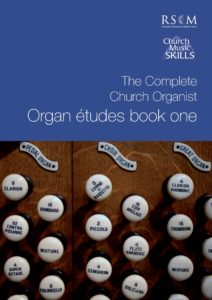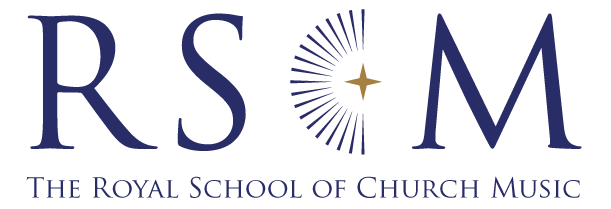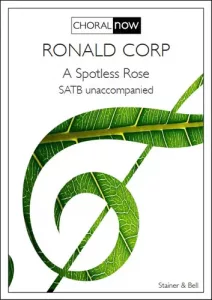Reviews of CDs
* Worth hearing
** Recommended
*** Essential listening
CHORAL CDs
***
MAGNIFICAT 2
Choir of St John’s College, Cambridge / Andrew Nethsingha
Signum Classics SIGCD667
Magnificat 2 follows another album of evening canticles recorded in 2019. This selection focuses on settings written since the 1930s. We begin with Herbert Howells’s Collegium Regale followed by works by Sydney Watson, Lennox Berkeley, Walton, Sumsion and Francis Jackson. Giles Swayne’s Magnificat I is also included, as is Arvo Pärt’s setting. The finale comes from Julian Anderson, written in 2019 for St John’s choir, an ensemble that has been noted for its vibrant vocal colour. Throughout there is extraordinary attention to detail and uniformity of phrasing that many choir directors might crawl over glass to wish for.
A beautifully produced booklet accompanies this CD, which includes a thought-provoking essay from Rowan Williams entitled ‘New Testament Canticles’. Writing about powerful lines such as ‘he hath … exalted the humble and meek,’ he comments, ‘The irony of having a disruptive message embodied in a setting of beauty and order is potentially a powerful tool of understanding.’ How composers and performers alike respond to these texts has been an illuminating listening exercise.
Stuart Robinson
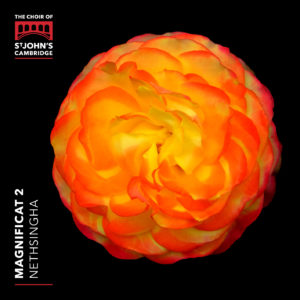
**
MUSIC FOR THE KING OF SCOTS: INSIDE THE PLEASURE PALACE OF JAMES IV
Hyperion CDA68333
Binchois Consort / Andrew Kirkman
This is an interesting disc, as much for historical as for musical reasons. It is part of an ongoing project, ‘Hearing Historic Scotland’, aiming to bring back the lost performance space of Linlithgow Chapel. Everything from repertoire to acoustic has been taken into consideration to make this as historically informed a recording as possible. Some listeners may feel that the opening plainsong Horrendo subdenda rotarum machinamento and Dilexisti iustitiam are hurried and their dynamics exaggerated. Carver’s ‘Catherine Wheel’ Mass is given a more successful performance. The balance of the ensemble is particularly good; however, the countertenors can be overpowering at the top of their register, to the extent that the pitch suffers. The well-chosen tempi allow the complex, weaving polyphony to be heard. It would be nice to hear this in a chapel at Holyrood Palace or Stirling Castle, where it would almost certainly have been performed in the 1500s.
Ian Munro
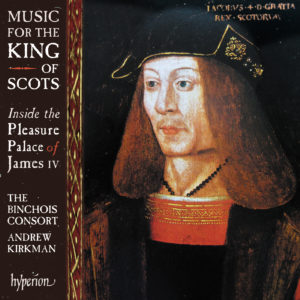
***
MESSE DA PACEM: MUSIC BY PIERRE VILLETTE, YVES CASTAGNET & MAURICE RAVEL
Choir of Royal Holloway / Sarah Fox (soprano) / Andrew Dewar, Liam Condon (organ) / Rupert Gough
Ad Fontes AF004
I would like to add an extra star for this superb CD that transports us to the musical delights of 20th-century Paris. In the heatwave of summer 2019 the choir of Royal Holloway recorded in the spacious acoustic of Notre-Dame d’Auteuil, accompanied on its newly restored Cavaillé-Coll organ. Such a distinctive instrument is fitting for immersion in the lush writing of Pierre Villette (1926–98), a style steeped in (among others) Ravel and Vierne, and in particular Duruflé who taught him harmony and organ during his teens. Villette provides the centrepiece, with his Messe Da Pacem arranged for organ from the original scoring of orchestra and two organs by Rupert Gough, the choir’s director. Gough is also responsible for a beautiful setting of the opening text of the Requiem Mass to Ravel’s Pavane pour une infante défunte, which opens this CD.
Complementing these works is a fine short mass setting and anthem by Yves Castagnet, organiste titulaire of the choir organ at Notre Dame Cathedral, the Gothic masterpiece badly damaged by fire just months before this recording. The soprano, Sarah Fox, an alumna of the college, provides rich vocal colour, nowhere more so than in Villette’s Salutation angélique. It’s worth trawling YouTube for background about this excellent project, which has beaucoup d’élan et aussi tendresse.
Stuart Robinson
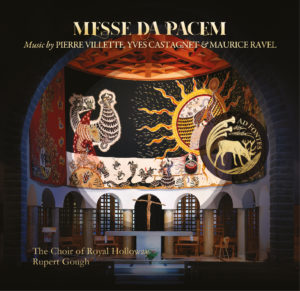
SINGLE COMPOSER CDs
**
CECILIA MCDOWALL: WORKS FOR ORGAN
William Fox plays the organ of St John the Evangelist, Islington / Lucy Humphris (trumpet)
Naxos 8.579077
**
CECILIA MCDOWALL
Choir of Trinity College Cambridge / Stephen Layton / Alexander Hamilton plays the organ of St George’s Chapel, Windsor
Hyperion CDA68251
Cecilia McDowall is one of those treasured composers who writes effectively and engagingly for almost any and every instrument or ensemble; moreover, she has a rare knack of consistently finding something new to say while retaining her distinctive, personal voice. Her music can be sumptuous or warmly consolatory, yet she is also unafraid to write works that are astringent, jarring and confronting. Both these new releases do justice to McDowall’s ecstatic, neo-medievalist vision, capturing the power and mystery of her music.
William Fox’s survey of McDowall’s organ works should serve as a benchmark recording for some time to come: he plays with assurance and displays an excellent ear for colour, well interpreting the composer’s intentions. The superb 1963 Walker instrument at St John the Evangelist, Islington is captured well: perhaps a slightly closer recording might have shown up more detail in individual stops during quieter passages, but tutti passages are thrilling and direct, particularly in the gripping George Herbert Trilogy. The warmth and clarity of Lucy Humphris’s trumpet adds a welcome change of texture in the more intimate set of Three Antiphons, adaptations of Three Latin Motets for choir. Alongside a handful of engaging single works, Fox also gives a searching reading of the substantial O Antiphon Sequence (2018), an Advent journey full of mystery and colour.
The O Antiphon Sequence also features on Hyperion’s recording: Alexander Hamilton’s performance, informed by the instrument and acoustic of St George’s Chapel, Windsor, replaces Fox’s urgency and clarity with a more measured spaciousness while retaining the mysterious essence of the music.
The choir of Trinity College, Cambridge gives electrifying performances of McDowall’s excellent choral works, sensitive to every shift in mood and texture. The recorded sound is ethereal and glowing, while the more lithe passages sound direct and immediate, though the text could come through more clearly in some places. Highlights include a stunningly clear high C in Adoro te devote, aping the famous rising fourth of Allegri’s Miserere, and the virtuosic performance of The Lord is good, where every texture and dissonance is superbly handled, every peak and trough a delight.
Huw Morgan
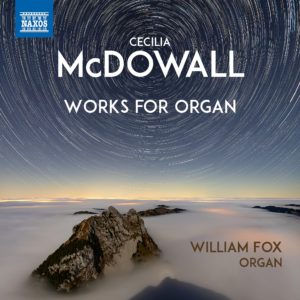
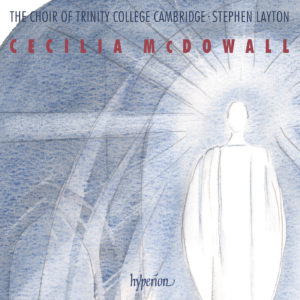
*
SACRED AYRES: CHORAL MUSIC BY PAUL AYRES
Chapel Choir of Selwyn College, Cambridge / Shanna Hart, Dāvids Heinze (organ) / Sarah MacDonald
Regent REGCD536
The CD title is a neat pun on the composer’s surname; Paul Ayres has carved a busy career as a freelance church organist, conductor and composer. This collection of psalms, hymn arrangements, spiritual songs, anthems and carols only really scratches the surface in showing off his wide-ranging output. Ayres soaks up and pours forth musical ideas like a sponge, some quite humorous such as a quirky arrangement of Crimond set in a Bach chorale-prelude style redolent of Wachet auf! The hymn arrangements, such as ‘Be thou my vision’, are very singable, performed here by the choir of Selwyn College Chapel. Ayres’s hope is you may find joy in what he’s written. It’s a varied and pleasant listen – a mixture of light touch and large-scale writing.
Stuart Robinson
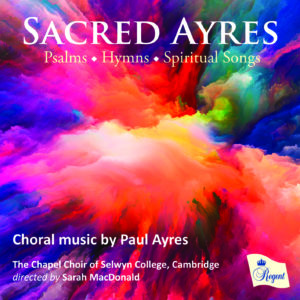
**
THE MUSIC OF GERRE HANCOCK (1934–2012)
St Thomas Choir of men and boys, Fifth Avenue, New York / Saint Thomas Brass / Jeremy Filsell
Signum Classics SIGCD631
In the UK, Gerre Hancock is not particularly well known, but was for 30 years organist and master of the choristers at St Thomas, Fifth Avenue, New York. This disc, released almost 10 years after his death, contains highlights from his vast compositional output. A Song to the Lamb provides a powerful, dynamic opening, but the brass and organ are overpowering. The balance improves in the Missa Resurrectionis, with the brass providing a more sensitive but punchy accompaniment in an exuberant performance. Infant holy, infant lowly is beautifully sung; throughout this disc, the choir’s diction is crisp and clear. The Air for Organ allows the fine organ of St Thomas to shine, and the virtuosity of Jeremy Filsell’s performance of the Variations on Ora Labora is breathtaking. This disc is a fitting tribute to a giant of American church music.
Ian Munro
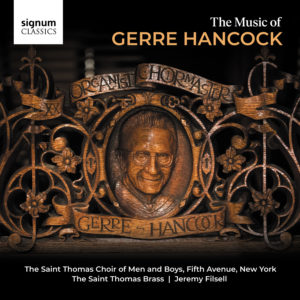
**
PIOUS ANTHEMS & VOLUNTARIES: MICHAEL FINNISSY
Choir of St John’s College, Cambridge / Glen Dempsey, James Anderson-Besant (organ) / Sarah O’Flynn (flute) / Cecily Ward (violin) / Andrew Nethsingha
Signum Classics 2-CDs SIGCD624
‘This is extremely beautiful music – rich, deep, full of colours, emotions and allusions. The music requires time to marinade in the listener’s mind. … I have gradually got to know the music, one piece at a time, over a four-year period – this has been a deeply enriching experience which I want others to share.’ So Andrew Nethsingha introduces this remarkable double-CD. Finnissy often takes inspiration from other composers – here Taverner, Tallis, Bach and Tippett – but, transcending the sources, creates something of extraordinary sensitivity, invention and individuality – and indeed spirituality.
Choral movements (‘pious anthems’) alternate with commentaries (‘voluntaries’) for organ and other instruments, culminating with a final Plebs angelica for two organs. The whole may be performed (and listened to) divided into separate pieces, but there is a satisfying narrative and musical shape to the full 84 minutes, moving from the two Marys in the opening Dum transisset Sabbatum to the concluding host of angels, and with a reworking of Bach’s Cantata 96 (Herr Christ, der einge Gottessohn) at its centre. Finnissy has written easier anthems for parish church use (Seven Sacred Motets, for example), but here the writing is virtuosic for choir and organ. Praise is due to the recording engineers for allowing complex counterpoint to be heard through the rich acoustic, and to Nethsingha, the St John’s choir and solo organist Glen Dempsey for assured performances.
Julian Elloway
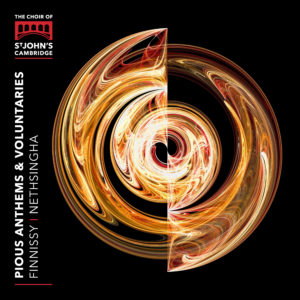
ORGAN CDs
***
HYMNE TIL ÆRØ
Kevin Duggan plays Danish organ music on the Flentrop organ in Dunblane Cathedral Odradek ODRCD408 available from www.dunblanecathedral.org.uk (UK only) or www.prestomusic.com
Those who missed the Dunblane Cathedral organ being put through its paces during the annual summer school or singing day can reacquaint themselves with the powerful Flentrop organ in this well-chosen programme full of new discoveries showcasing Kevin Duggan’s virtuosity. This is a superbly engineered performance: the organ mechanics are silent and the exquisite acoustic of Dunblane Cathedral is splendidly captured.
The programme covers over 300 years’ worth of music. Nicolaus Bruhns (1665–97) sets us off nicely on this Danish journey; the spirit of Bach and Buxtehude is never far away in his arresting Praeludium. Jesper Madsen’s Five Preludes are colourful pieces: harmonic lines are clear and nothing in the texture is lost. The lively, heavily syncopated fifth prelude, based on a plainsong melody, will have you dancing! The Commotio by Carl Nielsen (1865–1931) is the substantial work on this programme and we are given a flawlessly virtuosic performance of this most demanding organ work that includes some three fugues!
Ian Munro
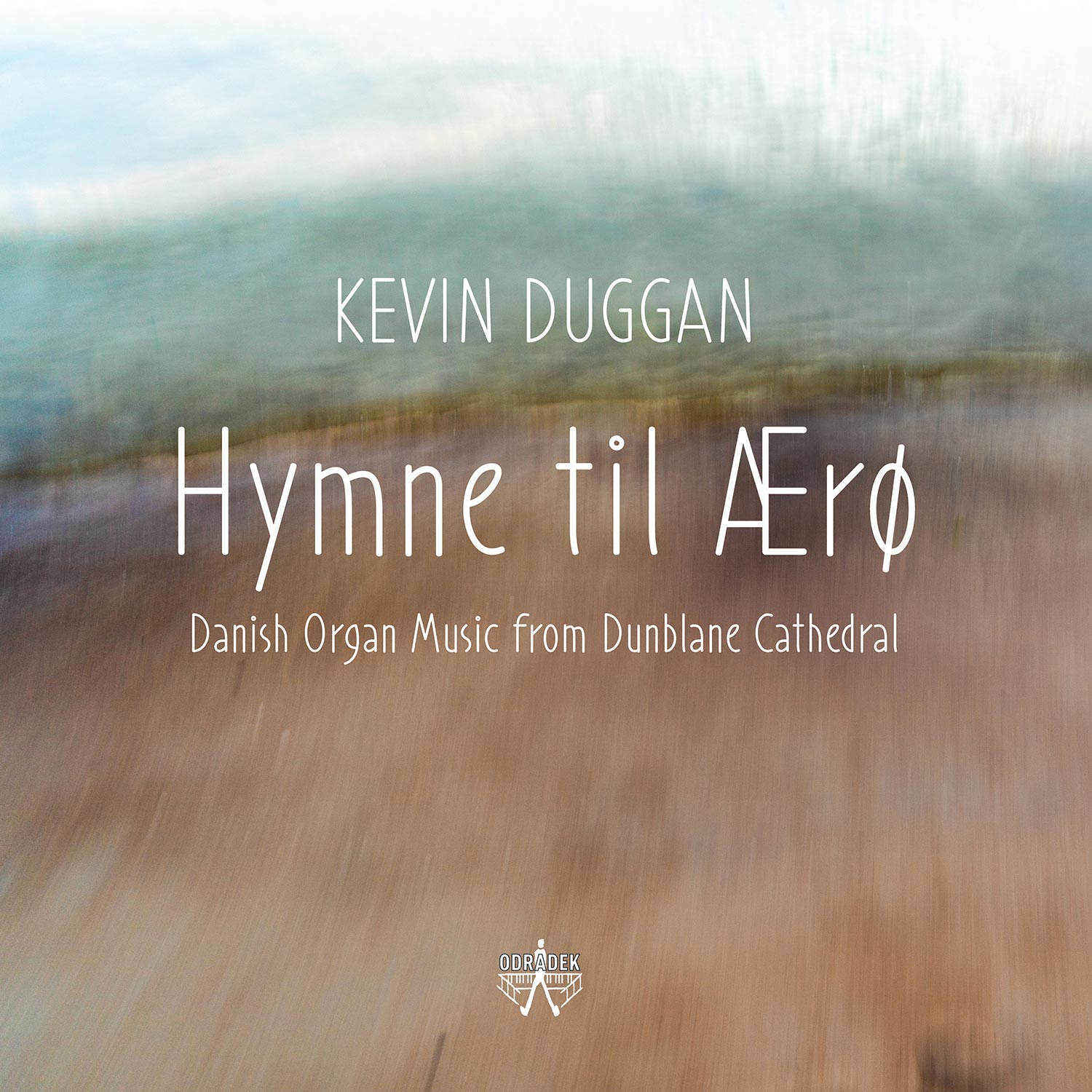
DVD
***
LOUIS VIERNE: THE COMPLETE ORGAN SYMPHONIES
Roger Sayer plays the organ of the Temple Church, London Fugue State Films 4-disc pack FSFDVD014
Last year’s lockdowns did not allow much celebration of the 150th anniversary of the birth of Louis Vierne (1870–1937), but this outstanding set of one DVD plus three CDs provides a lasting tribute. Roger Sayer plays the Harrison and Harrison in the Temple Church, London. A 40-page booklet with detailed notes about the symphonies and the organ’s specification accompanies CDs of the six symphonies in stereo and 5.1 surround sound, and filmed on DVD.
The six symphonies, written over a 30-year period, continue the Franck and Widor tradition of organ symphonies. The Temple organ, although hardly French, sounds excellent after its 2013 rebuild and always appropriate for the music; the performances are authoritative and present the most technically challenging passages without fuss. If you need convincing of the value of this set, listen to and watch the two trailers on the Fugue State Films website where Roger Sayer firstly talks about the music and then plays the finale of the Fifth Symphony.
Judith Markwith
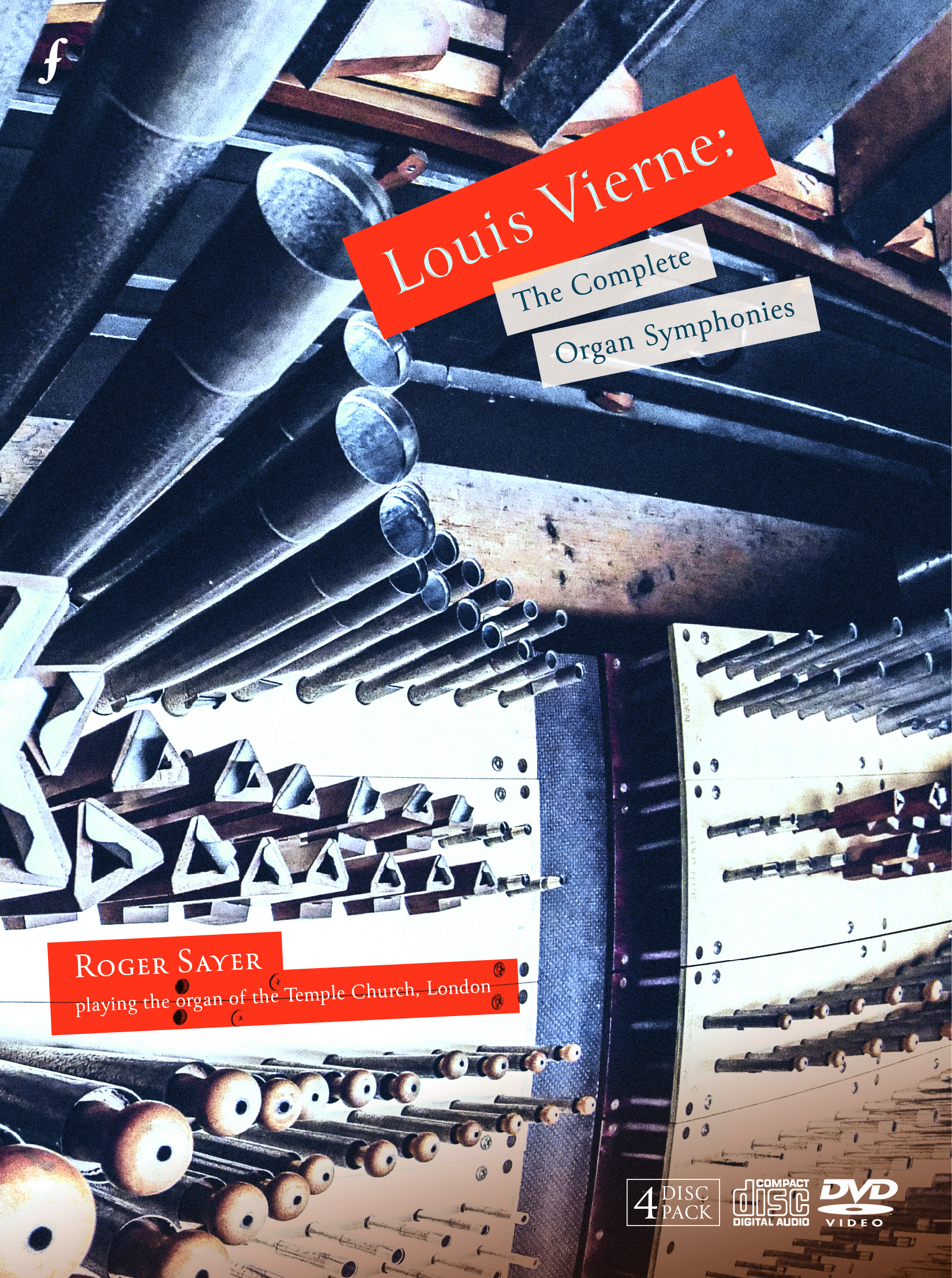
BOOKS
CHRISTMAS EVE AT KING’S
Timothy Rogers
Encore Publications 60pp. P/B 978-1-5272-4725-3 £9.99
The 100th anniversary of the King’s College Nine Lessons and Carols in 2018 spawned several books and DVDs chronicling the history of this iconic service. This short booklet does something that none of the others achieved: namely, it catalogues all the hymns and carol choices of those 100 years and the organ voluntaries – in addition to the newly commissioned carols, this a new tradition begun by a young Stephen Cleobury in 1983.
What elevates these lists from something ‘nerdy’ into something of practical use is the fact that the carol and hymn choices are associated with the various scriptural readings used in the carol service. For many of us, who annually need to choose carols and hymns matching the story of Christ’s birth, we sometimes need a nudge in the right direction for something biblically appropriate yet different. Here we have advice and guidance from the various eminent directors of music at King’s College over the years. What greater expertise could one hope for?
John Henderson
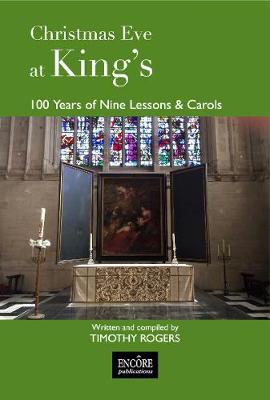
LIGHTEN OUR DARKNESS: DISCOVERING AND CELEBRATING CHORAL EVENSONG
Simon Reynolds Darton, Longman and Todd 128pp. H/B 978-0-232-53462-7 £16.99
There is agreement that attendance at weekday choral evensong in cathedrals and large churches is on the increase. There is less agreement as to the reason. Is it because of the anonymity, the fact that nobody will start asking you about your beliefs or to leave your contact details? Is it because it is to be found on weekdays after work rather than on a Sunday with competing demands for many people? Is it because it uses the language of the Book of Common Prayer? Is it for a free concert? Is it to be able to visit a cathedral without needing to pay an admission charge? For whatever reason the visitors/worshippers are there, and people, who may have had no spiritual intent on entering the building, leave having experienced some sense of the divine.
This is a book for everyone who might benefit from an introduction to choral evensong, whether occasional, non-committed visitor or regular worshipper. Simon Reynolds puts evensong in perspective in the context of the Church’s mission and worship and then, in seven concise chapters, looks at each part of the service from the responses to the blessing. Each chapter ends with ‘Words for reflection’ – it is a short book, but rich in content.
Julian Elloway
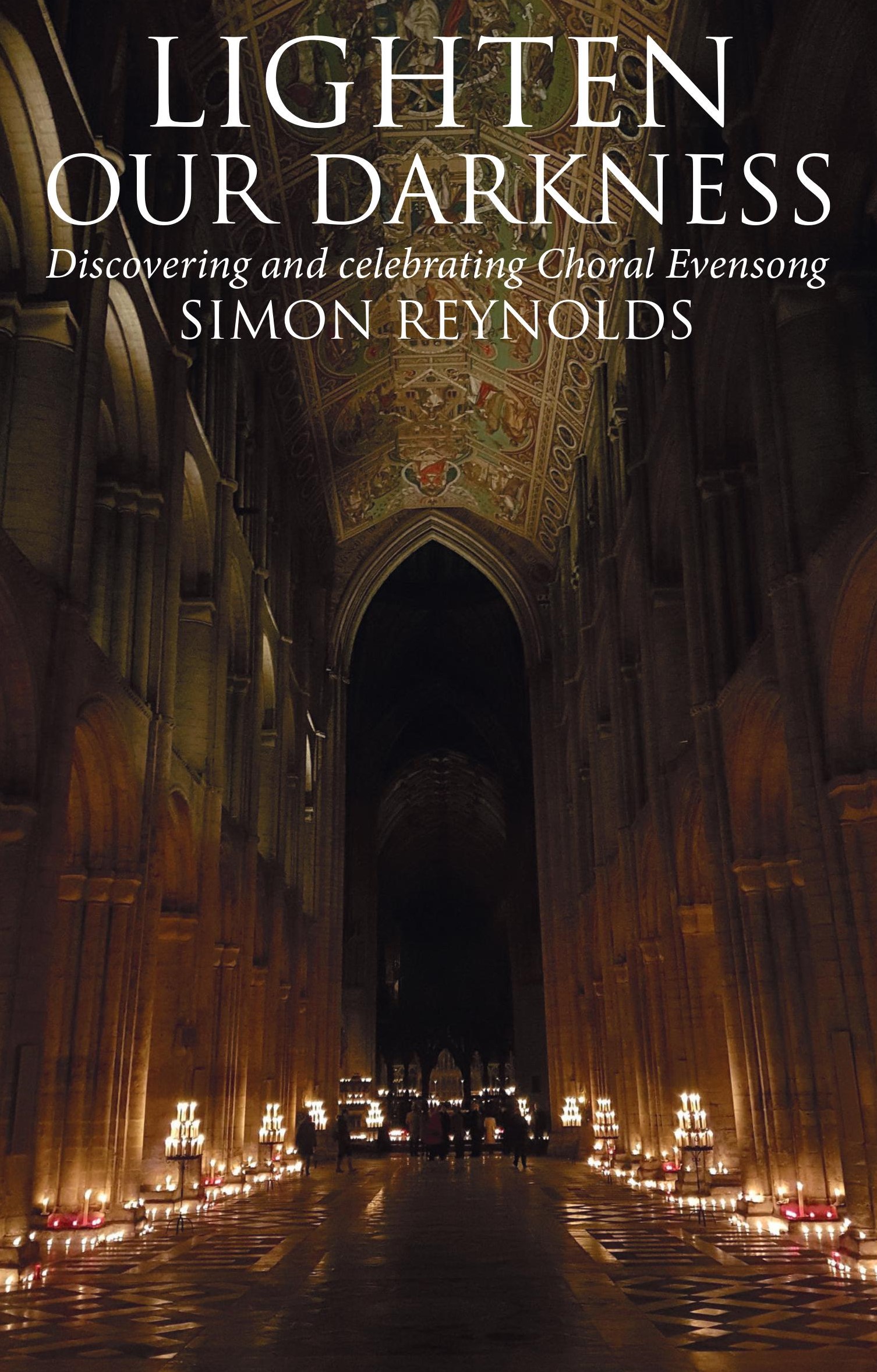
BORN IN SONG: TEXTS AND TUNES FOR WORSHIP
Brian Hoare
Self-published P/B 978-0-86071-851-2 £7.50 available from www.moorleys.co.uk/shop
Many people used their enforced leisure during 2020 to undertake activities that they had not been planning, and Brian Hoare used the time to assemble this collection of his texts and tunes. He is an unusual hymn writer in that he writes hymn tunes for his own and other people’s texts, as well as his own hymns with words and music.
The Methodist Hymn Book (1933) famously opened with the statement ‘Methodism was born in song’ but the title of this collection is also taken from what may be the author’s best-known hymn ‘Born in song!’. Several of the 63 items appear with choral arrangements, although it is a pity, especially in, for example, the attractive version of ‘Love divine, all loves excelling’, that the music and typesetting is less than professional, with peculiar gaps in the bars as well as collisions. But the whole book, with its foreword by Pam Rhodes, and autobiography and numerous indexes, is a warm tribute to a hymn writer who has made a significant contribution to Methodist hymnody.
Julian Elloway
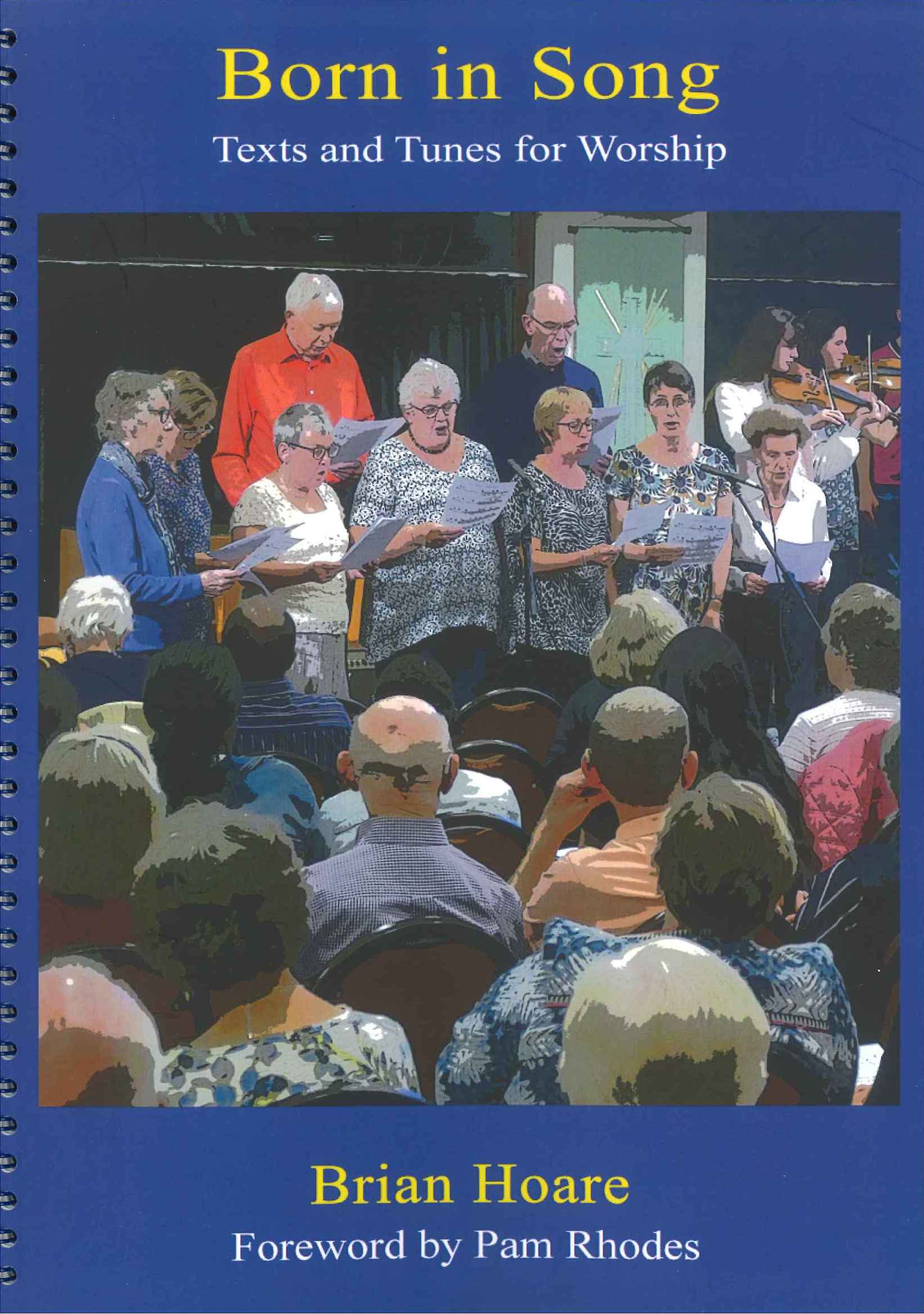
Reviews of printed music
CHORAL MUSIC
E Easy
M Medium
D Difficult
ADVENT
O COME, O COME EMMANUEL [E]
arr. Sarah MacDonald
SATB (with divisions) and optional congregation
Encore Publications £2.50
THE ANGEL GABRIEL [D]
Philip Moore
SATB and organ
Encore Publications £2.95
Sarah MacDonald accompanies the verses of the Veni Emmanuel melody with voices repeating the ‘Rejoice, rejoice’ motif. The texture gradually builds from a single soprano line to full choir, with congregation optionally joining in. The idea is simple and effective; the music is indeed easy, but all four parts are divided for much of the time.
Philip Moore’s approach to The Angel Gabriel is on a large scale, in response to a King’s College, Cambridge commission, and in memory of Stephen Cleobury. The first two verses rework the same musical material, both verses culminating in exciting 5/8 Glorias. A change of mood for the third ‘gentle Mary’ verse includes a solo soprano quoting the opening melody of Stanford’s Magnificat in G. The Glorias return and propel the music into a further reworking of the opening for the final verse and a high-pitched eight-part cry of ‘Gloria’ that King’s doubtless took in their stride, but may tax many a parish-church choir.
I SING OF A MAIDEN [E]
Christopher Maxim
SATB
Paraclete Press PPM01925M £1.99
ADVENT CAROL [M]
Toby Young
SATB
Cadenza Music CAZTYADC01 £2.25
Two reflective carols, both gentle but building to a climax near the end, yet in other ways they are distinctively different. Christopher Maxim’s approach to I sing of a maiden has the same sort of sensitivity to the words as found in Patrick Hadley’s much-loved setting – restrained, beautiful and attractively understated. Even the ‘Mother and maiden’ climax is marked ‘ma dolce’.
Toby Young sets Kevin Crossley-Holland’s poem ‘The Heart-in-waiting’ for his Advent Carol and, despite the ‘Gently rocking’ tempo indication, a spikiness creeps into the harmonic language, starting with ‘rough bark’ and ‘sharp thorn’. The piece builds (and the bass line climbs) to a warm, bright climax as the heart-in-waiting says to Jesus, ‘This is the place where you must be born.’
THERE IS NO ROSE [M]
Phillip A. Cooke
SATB choir (with divisions) and semi-chorus
Cadenza Music CAZPCTNR01 £2.25
THE EARTH IS THE LORD’S [D]
Ashley Grote
SATB and organ
Encore Publications £3.95
As with Toby Young’s Advent Carol (see above), There is no rose was published several years ago in the carol collection En Bethlehem; it is good that both pieces are now available separately. Phillip Cooke sometimes evokes shades of Britten from A Ceremony of Carols, but, strikingly, Cooke gives the Latin final line of each verse to a separate semi-chorus or solo quartet that might (most effectively) be off-stage and that fades into nothing at the end with ‘Transeamus’ or ‘let us go’.
Ashley Grote’s large-scale anthem combines texts from six different psalms and other biblical passages. The title, The earth is the Lord’s, from Psalm 24 opens the work and recurs at the end after verses about the glory of God and the coming Saviour. There is excitement enough as the nations furiously rage, and the gates lift up their heads and the King of glory shall come in (all those Advent texts are there), but there is also contemplation as we look toward the east. It would provide a powerful centre to an Advent service for a good choir and organist.
James L. Montgomery
CHRISTMAS, UPPER VOICES
TOMORROW SHALL BE MY DANCING DAY [E/M]
arr. Robert Quinney
Three-part upper voices and organ
Encore Publications £2.50
PEACEFUL WAS THE NIGHT [M]
James McCarthy
SSAA
Stainer & Bell CN27P £2.50
Robert Quinney gives the Dancing Day tune to a unison first choir that could contain less experienced singers or non-music readers. A two-part second choir harmonizes the tune and decorates it, often contrapuntally, with organ providing additional support. It is a nice approach to the melody, different from other well-known settings, fun to sing and full of interest for the listener.
James McCarthy sets words by John Milton depicting the stillness of the Christmas night. But, as time stood still, the enormity of the appearance of the ‘Prince of Light’ and ‘new joys’ are strikingly portrayed, and then altos kick off a pulsating rhythm for the stars that ‘will not take their flight … until their Lord himself … bid them go’. This is a good Christmas anthem for midnight or early Christmas morning, or at other times when something different from standard Christmas fare is wanted.
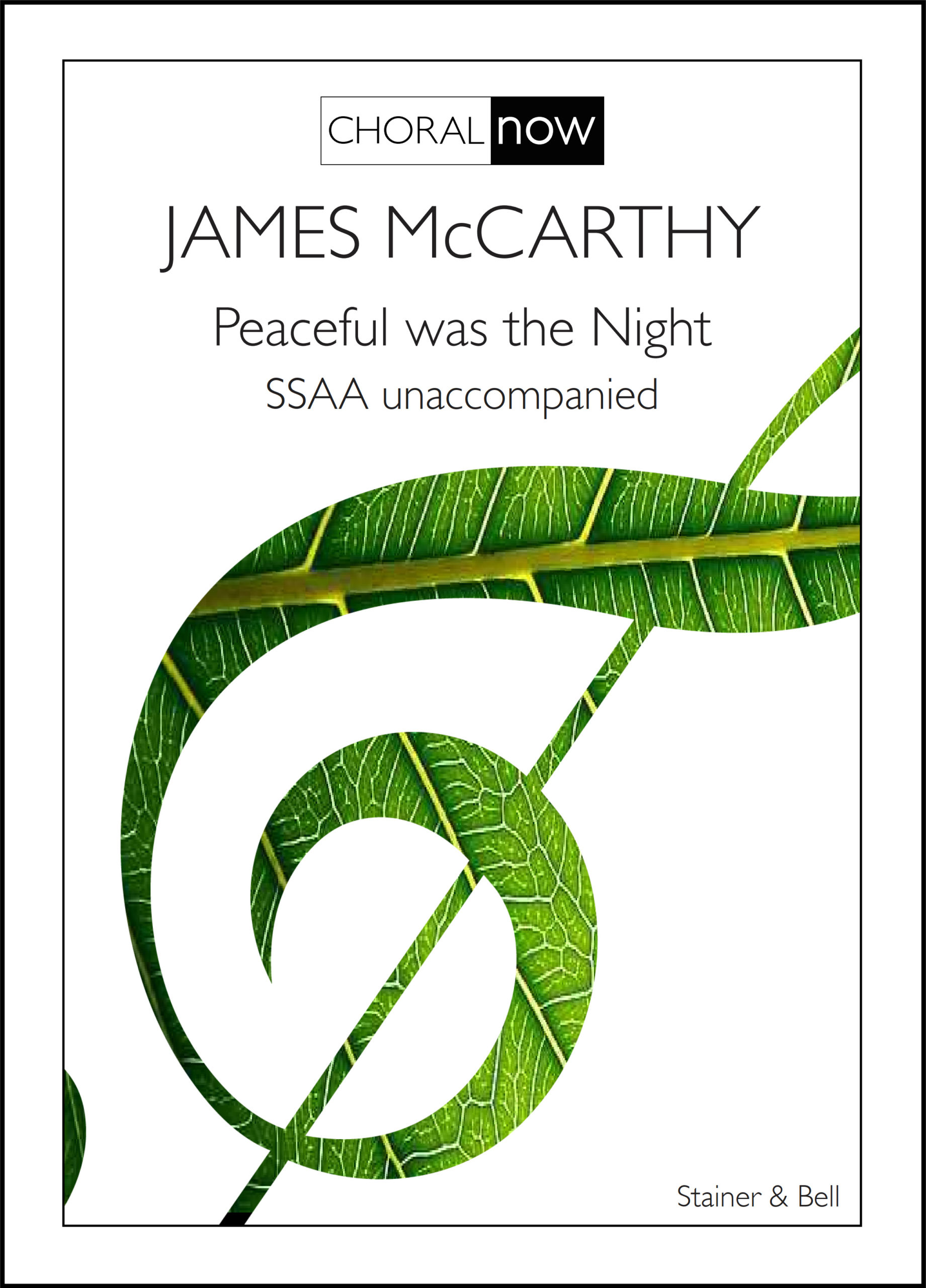
SONGS OF CELEBRATION [M/D]
Emma Johnson
SSA and clarinet
Encore Publications 979-0-9002395-9-4 £9.50
I hope that cathedral and church upper-voice choirs will take up these delightful Christmas settings for voices and clarinet. All have original music, including the opening ‘I sing of a maiden’. Emma Johnson has provided a new English translation for ‘Il est né le divin enfant’, with the appropriate ‘Blow, the woodwinds blow! Let the pipes resound!’. ‘Precious gift’ has original words by the composer with a real intensity in words and music, describing the baby who ‘bears the weight of the world’. After which, ‘There is no rose’ unexpectedly provides a boisterous finale, dancing its way to the end in 7/8 with glissandi and vocal imitations of snare drum and hi-hat.
James L. Montgomery
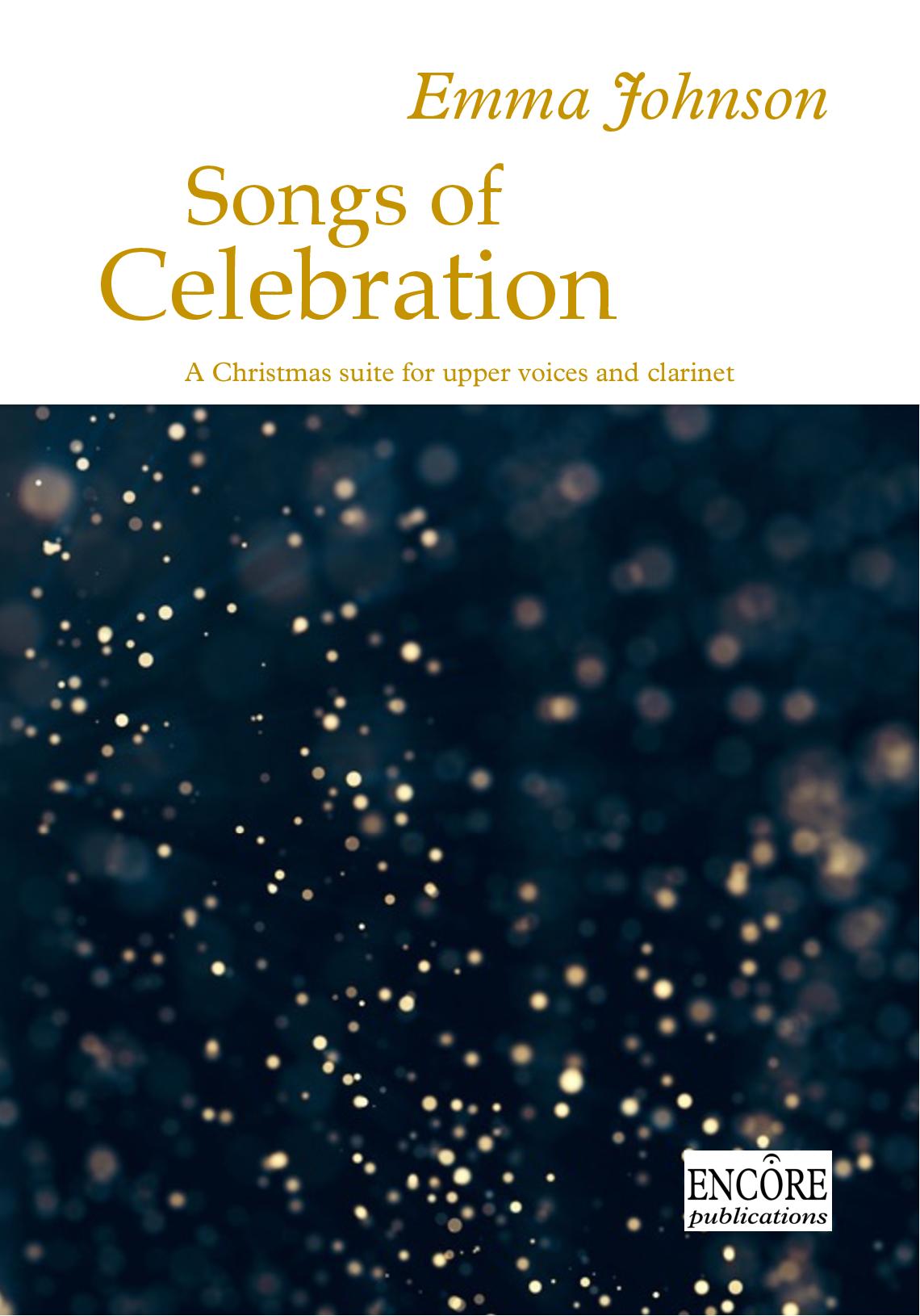
CHRISTMAS, MIXED VOICES
A SPOTLESS ROSE [M]
Ronald Corp
SATB
Stainer & Bell CN28P £2.25
A SPOTLESS ROSE [M]
Becky McGlade
SATB (with divisions)
Oxford X783 £2.20
Ronald Corp’s Spotless Rose setting manages to sound as firmly in the English choral tradition as Howells’s setting of 99 years earlier, but, as one would expect, follows its own path. Rhythms are fluid, but consistent between the two verses. The second verse takes wing just before the end and instead of moving to a close in A minor, repeats ‘the blessed babe’ to come to rest on ‘was born’ in A major. It is a quietly effective anthem.
Becky McGlade’s approach is more austere. In her version of Catherine Winkworth’s text the first verse concludes with ‘in the dark midnight’ and the whole piece ends with ‘in a cold, cold, cold winter’s night’. The sparse textures, however, make the moments of warmth, such as on ‘unfolds to light’, all the more effective. Every line of text ends with a rest for the whole choir, as if to allow the words to sink in – I look forward to hearing it in performance.
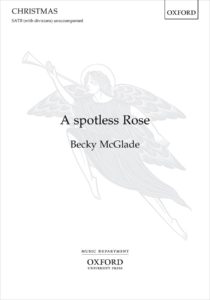
ANGELS [M/D]
Cecilia McDowall
SATB and organ
Cadenza Music CAZCMDAN01 £2.25
IN SPLENDORIBUS SANCTORUM [M]
Mark Jordan
SATB (with divisions) and organ
Banks Music Publications GCL037 £1.95
William Drummond’s poem The Angels, for the Nativitie of Our Lord provides the text for Cecilia McDowall’s Angels, imagining the words the angels sang to the shepherds. The music has a balance between the urgency of ‘Run, shepherds, run’ and the more contemplative description of the what the shepherds will find – ‘Graceful, always flowing’ is the instruction at the start. The vocal lines, easier than they might appear at first glance, have a tonal feel, with more chromatic organ writing that also well supports the singers. It would be a good addition to the repertoire for many church choirs.
Mark Jordan has set a sentence from the propers for Christmas Midnight Mass, In splendoribus sanctorum, with an in-your-face setting that grabs attention from the opening Tuba solo onwards. There is repose in the central section, but it is as an exuberant portrayal of ‘In the brightness of the saints’, perhaps for a Christmas concert or Nine Lessons and Carols, that it would make its mark.
Julian Elloway
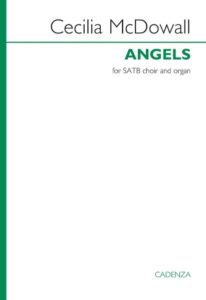
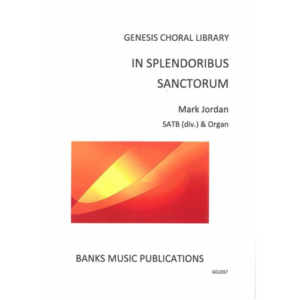
HARK! HARK! GLAD TIDINGS CHARM OUR EARS [E/M]
LET CHRISTIANS ALL WITH JOYFUL MIRTH [E]
Christopher Maxim
SATB and organ
Paraclete Press PPM01947M £3.49 and PPM02014M £1.99
Hark! Hark! Glad tidings charm our ears is a setting of words from a Southern Harmony hymn combined with verses from a metrical version of the Benedicite, with a refrain ‘Our God is born’. It is a joyous, dancing piece, easy to learn and effective in performance. Let Christians all with joyful mirth has five unaccompanied verses with the same harmony (but different dynamics) before a contrapuntal refrain. The text is from a gallery carol book, and the skilfully composed music has the feel of an old carol. The organ accompanies the refrain, and tops and tails the piece.
THREE CHRISTMAS CAROLS
Joanna Gill
S solo, SATB and piano
Universal Edition UE 21787 £8.99
Three very different texts receive subtle settings that will delight singers and audiences. Longfellow’s Christmas Bells (‘I heard the bells on Christmas Day’) has a rhythmically syncopated setting against a piano beat (and bell-like textures). ‘Look to the stable’, with new words by Becca Beschizza, is a lullaby that builds to a grand conclusion. Finally, the popular text of Sir Christèmas has a thoughtfully restrained treatment that allows the words to make their mark (especially at ‘Christ is now born of a pure maid’).
Stephen Patterson
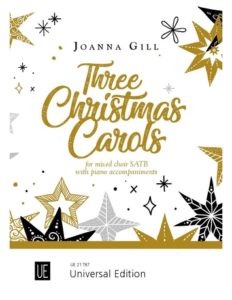
LATIN-TEXTED MASS SETTINGS
MISSA BREVIS AROSIENSIS [M]
Mårten Jansson
SATB
Bärenreiter BA8527 £4.50
DANCE MISSA BREVIS [E/M]
Adrian Connell
SSA and piano (opt. bass and drums)
Edition Dohr (Universal Edition) 88828 £16.50
Mårten Jansson’s Mass setting was written for the choir of Västerås Cathedral in Sweden, whose diocese (in Latin, Arosiensis) is twinned in the UK with the Diocese of Gloucester. The mostly gentle, unaccompanied four-part counterpoint is gratifying to sing, as one would expect from as experienced a vocal teacher and conductor as Jansson. The mood is described by the composer as being ‘of a steadfast trust in God, a sense of quiet but profound happiness’, despite fortissimo climaxes in each movement, and an unexpected triple forte on ‘peccata mundi’ in the Agnus Dei.
In contrast, Adrian Connell enjoys pounding rhythms in his setting for three-part upper voices and piano (with optional bass and drums). The various moods are shown by the tempo indications with ‘Jazz Waltz’ Kyrie, ‘Bossa Nova’ Gloria, ‘Siciliana’ Sanctus, ‘Tango’ Benedictus and ‘Haberna’ Agnus Dei, those last two being quite a surprise! Enterprising upper-voice choirs should try this liturgically.
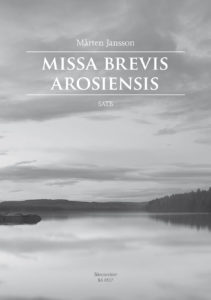
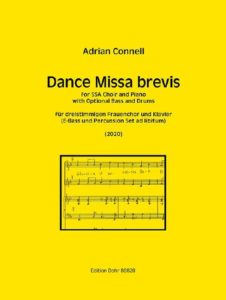
MISSA IN MEMORIAM [M]
Solo or unison choir and organ
MISSA BREVIS [E/M]
TTBB and organ
Tim Knight
Knight Edition (Universal Edition) KE206 and KE101 £2.60 each
The ‘In memoriam’ setting was written for solo soprano and organ (manuals only or with pedals). There are a number of top Fs and the composer suggests that for choral performance the conductor will ‘allot sections to parts which may be too high for all voices’. Some choir directors might instead choose to add an optional lower part in those bars, which would also provide variety to the texture. The setting for men’s voices shows the composer’s familiarity with the soundworld of male voice choirs. It would be easy to learn, enjoyable to sing and with plenty of interest in all four parts.
Stephen Patterson
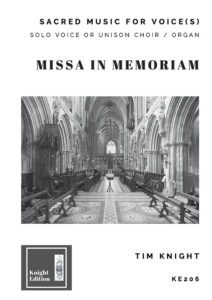
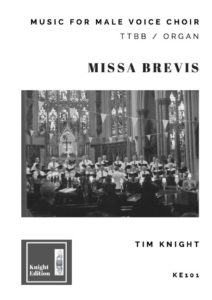
ORGAN MUSIC
E Easy
M Medium
D Difficult
ADVENT ABD CHRISTMAS
VARIATIONS SUR LE CHORAL ‘NUN KOMM, DER HEIDEN HEILAND’ [D]
Denis Bédard
RSCM N1240 £6.50
Denis Bédard’s set of variations on the Lutheran chorale Nun komm, der Heiden Heiland was a commission from the Foundation Claude-Lavoie for the 2017 Quebec City organ competition. Each of the five sections (Thème – Trio – Fileuse – Plainte – Toccata) is designed to test the musical and technical capabilities of the performer. While this work is more likely to be heard in an organ recital, there is no reason that it should not be performed liturgically, either in its entirety or as individual movements. It is certainly a piece for the more advanced organist, although the Thème and charming Plainte are more technically accessible than the others. This is a well-presented edition by the RSCM, and justifies further exploration.
Richard Brasier
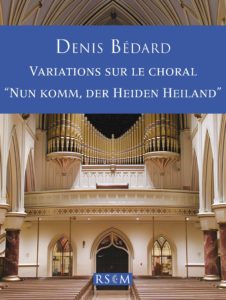
PRELUDE ON A TRADITIONAL NORMANDY MELODY [E/M]
FESTIVE POSTLUDE ON ‘MENDELSSOHN’ [M]
Vernon Hoyle
Banks Music Publications 14102 £3.50 and 14103 £3.95
The Normandy melody that provided Reginald Jacques with the ‘second tune’ for ‘Away in a manger’ in the original Carols for Choirs (a melody that many of us know, but infrequently sing), appears twice at the centre of Vernon Hoyle’s prelude. It is surrounded by what sounds as if it might be another Normandy melody in the same metre and key, but is, I think, the composer’s own invention, serving as introduction and extended conclusion. It would be effective as a quiet introduction to a Christmas service.
For a postlude on ‘Hark! the herald angels sing’, we are offered a full-bodied series of treatments of the tune, loud throughout and ending ‘Molto maestoso’ – slightly bombastic, but that is what you may need to get people moving out at the end of a Christmas service. I particularly like the build-up over a long dominant pedal near the start and repeated at the end.
Duncan Watkins
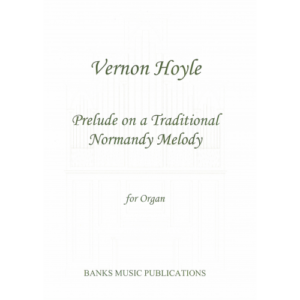
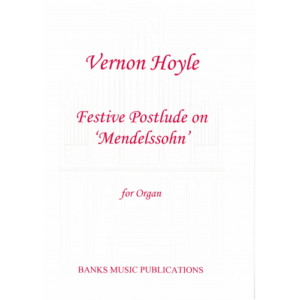
CAROL SONATA [M]
Huw Morgan
Firehead Editions FH287 £8.62
These four transcriptions for organ of choral pieces by Huw Morgan work well, and the composer’s musical language transfers easily from voice to instrument. It is a wide-ranging language, characterized by brightness and clarity, incorporating medieval and 20th-century influences including Maxwell Davies, Mathias and perhaps Rubbra. I love the drones, the parallel fourths and fifths, and the medieval-style counterpoint and decoration. There is a ‘carol feeling’ about the pieces that would make one or all of them work effectively at a Christmas service or concert. They are only available to download from https://fireheadorganworks.com/, but you can peruse the complete score there first.
Julian Elloway
MANUALS ONLY
SIX CONCERTOS [M]
Henry Burgess Junior, ed. David Patrick
Fitzjohn Publications £13.00
Very little is known of Burgess, apart from this set of six concertos, published in c.1740 and in G, B flat, A, F, G minor and C minor. Most are in three movements, opening with a through-composed Allegro, followed by a slow movement in binary form, including a Siciliana with a Lombardic rhythm in No. 4, and finishing with a fast movement in binary form, including a Giga in No. 1 and a Minuet and Trio in No. 6. A robust fugue is inserted before the closing movement in No. 2. Andantes in dotted rhythm in No. 5 and repeated chord echo effects in No. 6 introduce the opening Allegros of those two concertos. The only performance indications are ‘Tutti’, ‘Soli’, the occasional ‘Senza Organ’ (seen as an echo), ‘Hautboy’ in the Largo of No. 5 and ‘Piano’ in the opening Andante of the much shorter sixth concerto.
Although mainly in two voices, the relentless outer movements require nimble fingers, and are well worth practising. Some filling will enhance the slow movements and transitional cadences. The presentation of these attractive concertos is of the standard associated with the indefatigable David Patrick.
John Collins
ANTHOLOGIES
A STANFORD ORGAN ALBUM [E–D]
Charles Villiers Stanford ed. John Scott Whiteley
Oxford 978-0-19-352993-9 £16.50
A Stanford Organ Album, edited by John Scott Whitely and published by Oxford University Press, is an album that presents a broader overview of the music of Charles Villiers Stanford (1852–1924), rather than dedicated solely to his solo organ music. Following an introduction and notes on the pieces, the album is split into two parts with original organ compositions followed by arrangements. Some works will be familiar, such as On a theme of Orlando Gibbons (Song 22), and others less so, such as the dramatic Te Deum laudamus: Fantasia, which bears many hallmarks of the choral Te Deum in B flat. Among the arrangements are A Concert Suite and Stanford’s hauntingly beautiful The Blue Bird. In all, this is an interesting album and a sound investment for any music collection.
Richard Brasier
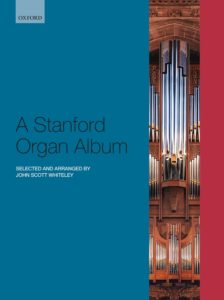
HOLY COMMUNION: OXFORD HYMN SETTINGS FOR ORGANISTS [Mostly M]
ed. Rebecca Groom te Velde and David Bednall
Oxford 978-0-19-340066-5 £21.95</strong
Subtitled ‘34 original pieces on hymns for Holy Communion’, this seventh volume of Oxford Hymn Settings is the first in the series not to be confined to a particular season of the church year. Four of the tunes are duplicated in earlier seasonal volumes, but the new pieces (all by different composers) take such different approaches to the tunes that it is good to have the alternatives.
The new joint editor, David Bednall, contributes a ‘Fanfare Postlude’ on Hyfrydol and a reflective ‘Pastorale’ on Stella. Malcolm Archer has a special knack of creating hymn-tune preludes that, often approached from an unexpected angle, have so much to say in inverse proportion to the number of notes used – his All for Jesus, Holy, holy, holy is the Lord and Living Lord are true to form. To Michael Bedford fell the unenviable task of adding to the number of preludes on Liebster Jesu, but he grasps the task head-on with a frank acknowledgement to J.S. Bach. For Rhosymedre, on the other hand, Phillip Cooke allows not a trace of R. Vaughan Williams. It is impossible to do justice to the range of material here in a short review: from Adoro te devote (Rebecca Groom te Velde) to Woodworth (Pamela Decker), the full list is available on the OUP website.
Duncan Watkins
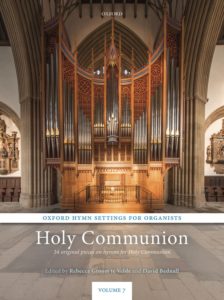
VOLUNTARIES
FANFARE IN B FLAT; THE GOSS-RADLEY FANFARE [M–M/D]
PRELUDE ON AN AMERICAN FOLK HYMN ‘LONESOME VALLEY’ [E/M]
Francis Jackson
Banks Music Publications 14110 £6.50 and 14109 £3.50
Three works by Francis Jackson are presented here by Banks Music Publications. The first volume features Jackson’s Fanfare in B flat and The Goss-Radley Fanfare. The Fanfare in B flat was composed for a service of thanksgiving at York Minster on 1 May 1955 to commemorate victories in battle of Her Majesty’s Armed Forces, and the Goss-Radley Fanfare, originally a work for organ and trumpet, was composed for the installation of a new warden at Radley College in 1991. For the purpose of this edition, the composer has reworked for organ solo much of the 1991 original. Both works are sprightly in nature and offer opportunities for using solo reed stops.
The Prelude on an American Folk Hymn ‘Lonesome Valley’, composed in 1973, offers a complete contrast to the two Fanfares. Its expressive nature, emphasized by colourful harmonies, lends it to a number of different performing scenarios, whether liturgical or in concert. These two volumes are neatly produced, reasonably priced, and would make worthy additions to the music shelves of lovers of English organ music.
Richard Brasier
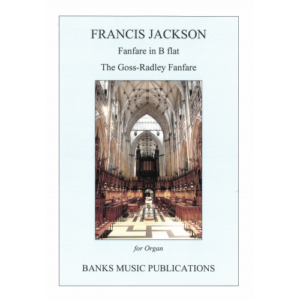
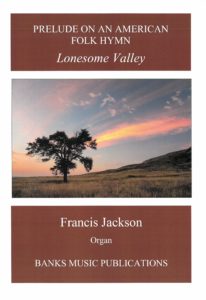
FIDUCIE [M]
TOCCATINA [M]
Ad Wammes
Oxford 978-0-19-355001-8 £7.95 and 978-0-19-355011-7 £8.25
While it is probably fair to say that Ad Wammes has never quite reached the ear-catching heights of his breakthrough piece Miroir, he has nevertheless produced a steady stream of strong works of varied character. These latest additions to his catalogue have less forbidding technical challenges than most and so provide an easier entry into Wammes’s musical world. Fiducie is a dance that builds to a strong and direct climax; the Toccatina is a similarly lively and fun work whose opening chromatic motif bears more than a passing resemblance to the James Bond theme. Both are rhythmically dynamic, satisfying to play and offer plenty of scope for registrational colour.
Huw Morgan
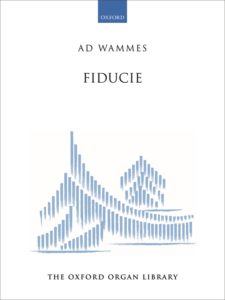
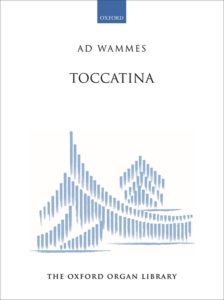
SCOTTISH LEGEND [D]
Amy Beach arr. Robert Gower
Oxford 978-0-19-353305-9 £6.75
The music of Amy Beach is making something of a resurgence these days and Robert Gower’s transcription of her Scottish Legend from Two Piano Pieces is a charming addition to an organist’s library. This little miniature, using (perhaps overusing) the Scotch snap rhythm and grace notes – a main feature of bagpipe music, certainly evokes a Scottish feel, stylistically and melodically. The opening melancholic D minor gives way to a more spirited D major section before concluding in a wistful D minor.
The music of Ireland and Scotland is a strong influence in much of Amy Beach’s music, but there appears to be no evidence that she ever visited Scotland. She was a prolific pianist, and in his arrangement Robert Gower has remained loyal to Beach’s original manuscript and her expressive piano writing, rearranged skilfully for organ.
Ian Munro
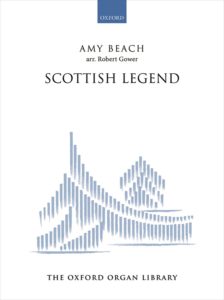
ORGAN STUDIES
THE COMPLETE CHURCH ORGANIST: ORGAN ÉTUDES BOOK ONE [E]
Rosemary Field
RSCM RO35 £7.50
With a wealth of teaching experience under her belt, Rosemary Field has produced this wonderful book of studies that provide useful technical exercises for beginner and less-experienced organists. The études themselves, which Rosemary Field acknowledges as ‘blatant pastiches’, are both fun and musically satisfying to play! Each étude comes with prescribed registrations and, where appropriate, fingerings, and is prefaced by a small commentary that introduces the music and highlights important performance directions, registrations and other musical techniques. This book should increase confidence in beginner organists; subsequent volumes are eagerly awaited. An absolute ‘must have’ for any aspiring organist!
Ian Munro
